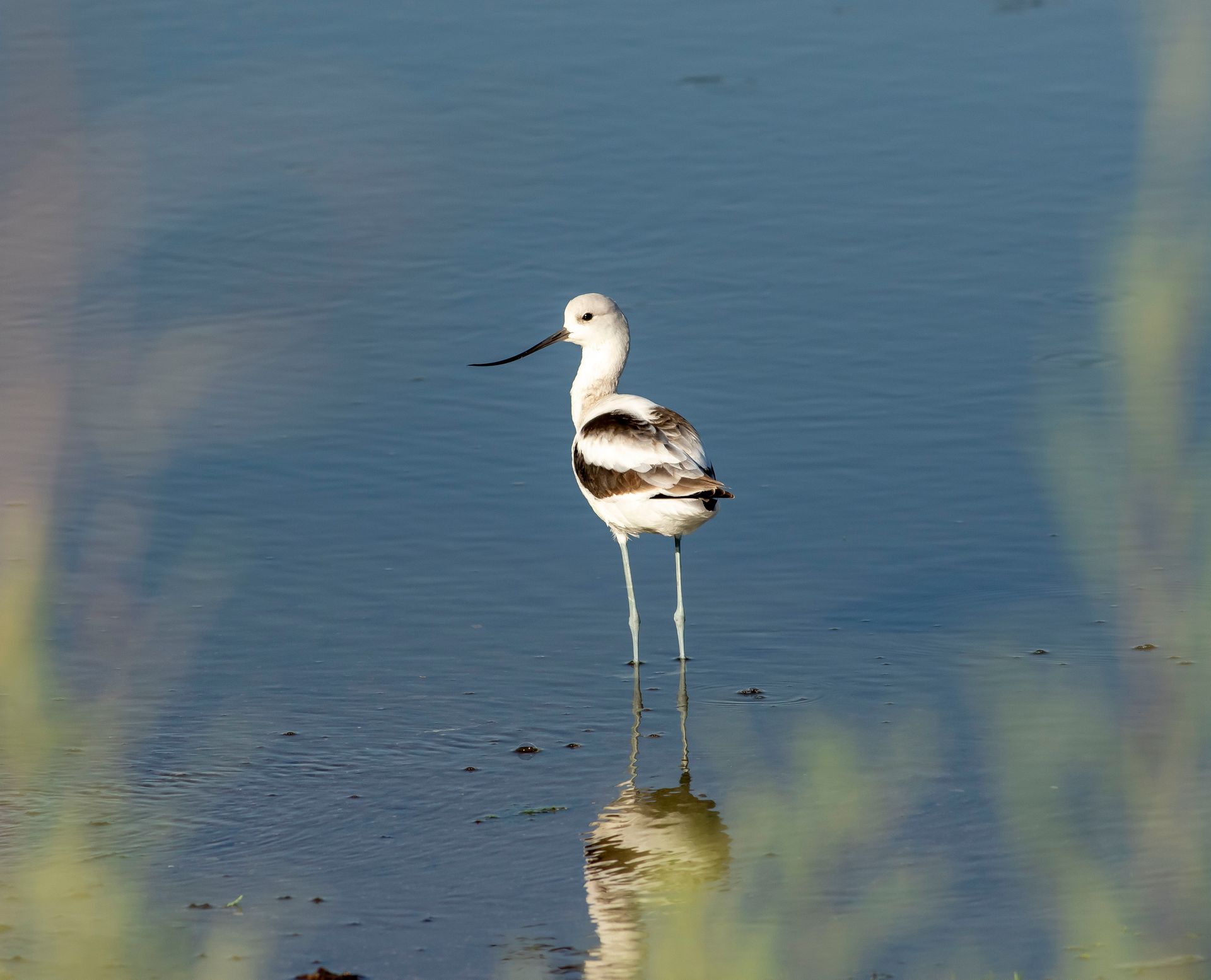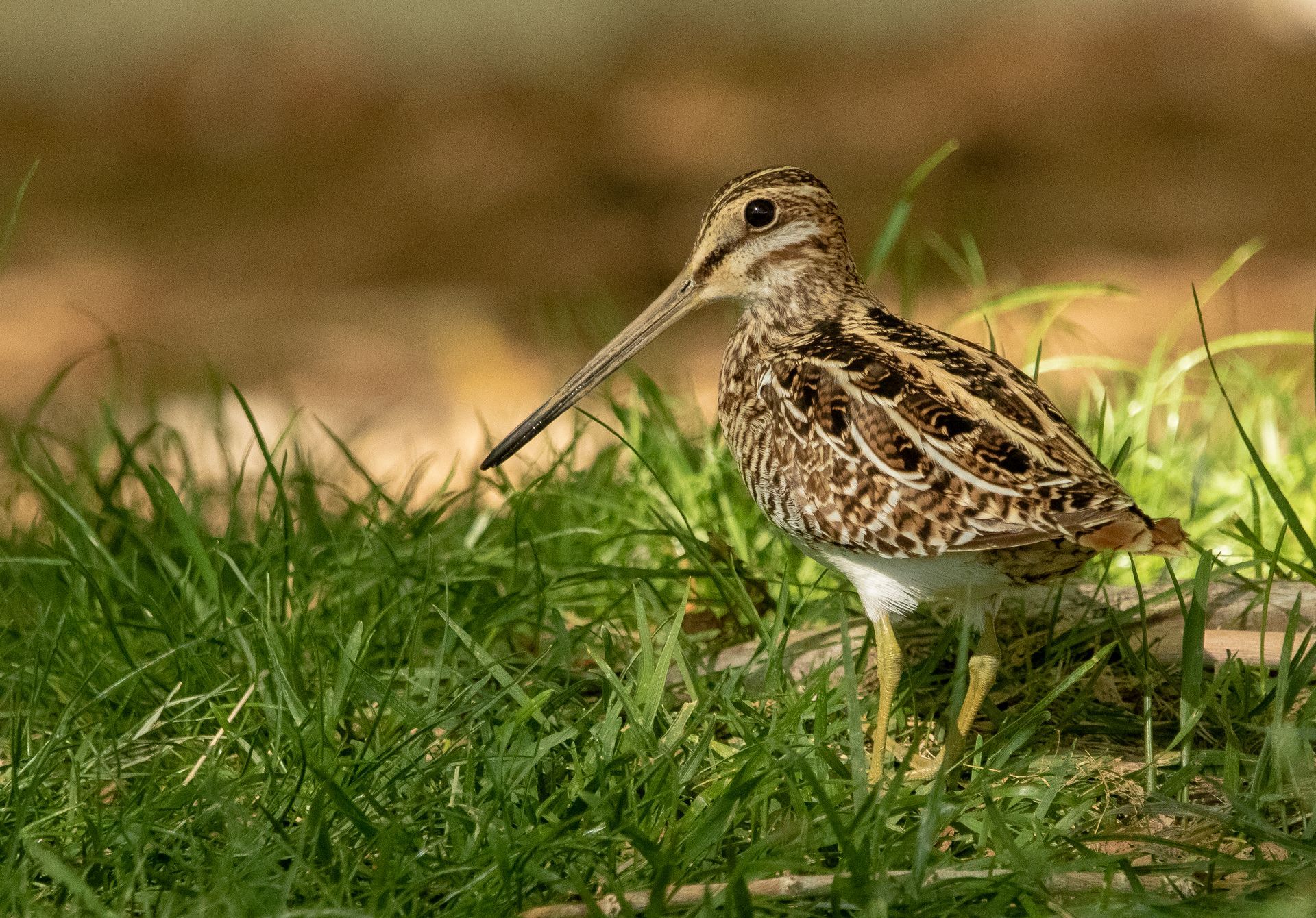April Birding Forecast

By Alex Harper
In March, Turkey Vultures, swallows, Ash-throated Flycatchers, Lucy’s Warblers, Hooded Oriole, and Yellow- headed Blackbirds sneak into southern Nevada. These species are among the most obvious returners to the region as springtime ushers in breeding and migratory activities for hundreds of birds. A common thread among these birds is that they do not come from a long way away from our region; many of them may have spent the winter in Arizona, southern California, or northern Mexico.
The increasing pulses of birds moving into southern Nevada throughout April are also driven by the instinct to breed. As the northern hemisphere warms up and trees begin to produce buds and flowers, birds come in to feed on resources that are not available during the winter and find cover in trees that were previously bare.
The movement of migratory birds in the spring is largely dependent on weather. Most species of songbirds migrate during the nighttime and fly on clear nights with favorable winds. In the spring, birds are in a rush to reach their breeding grounds to claim the best territory for nest rearing. Driven by hormones that are largely signaled by increasing daylight, they are compelled to push northward. To do this, they will need to store their energy in their wintering grounds and not take unnecessary risks to have the best chances for survival. For this reason, birds often fly with favorable tailwinds as opposed to against energy-depleting headwinds.
Songbirds employ a few strategies to help them migrate and navigate at night. It is believed that songbirds rely heavily on stars and other features of the night sky to help them navigate, recalling the skills early human navigators. Perhaps just as remarkably, songbirds have an ability to orient using magnetic fields. In the eyes of many birds is magnetite. Magnetite moves across the eyes depending on their orientation to the north and south poles, suggesting that they can visualize and perceive the magnetic fields suspended over our poles. You can think of this as having compasses in the eyes, and songbirds that migrate have higher concentrations of magnetite in their eyes than nonmigratory birds. Along with these adaptations, birds utilize and memorize landscape features such as mountain ranges, valleys and river systems. They employ all these innate and learned tools for navigation in conjunction to move about the world, and perhaps have other tools that we are unaware of.
Using these remarkable adaptations and navigational skills are millions of colorful songbirds that are rearing to migrate into and across Nevada in the months of April and May. To best see these species, one may not need to wander far outside of the city; many local parks and even backyards can attract a diversity of migratory species. Some of the most popular locations for viewing vireos, flycatchers, thrushes, warblers, sparrows, orioles, buntings and grosbeaks are Corn Creek Field Station, Floyd Lamb Park, Craig Ranch Park, Sunset Park, Clark County Wetlands, and the Henderson Bird Viewing Preserve. These parks are easily visible to birds flying towards or over the city, have available water, and offer a variety of options for resting and refueling. Palo Verdes and mesquite trees begin to bloom in April, and because they are native to the southwestern deserts, they’re familiar to insects and the birds that eat them. A grove of Palo Verde trees in a small park can be a gift that continues to give all spring. Fruiting mulberry trees can also be magnets for some birds. The Winchester-Dondero Cultural Center, Floyd Lamb Park, the vicinity of the Safekey building at Sunset Park, and the orchard at Corn Creek Field Station all have fruit-producing mulberries, and they can be extremely rewarding places to sit and watch colorful migratory birds.
There are a few things to remember when looking for migratory birds this spring. Firstly, well fed and healthy birds often begin migrating shortly after sundown and can fly for well over fourteen hours after launching. That means that even though birding activity is overall higher around dawn, newly arriving birds may not touch down into a place that you are birding until late morning. Secondly, pay attention to the weather in the immediate area and in locations to the south where most birds are coming from. Birds move when there is a gentle tail wind coming from the south and clear skies. Do not expect to find many newly arriving migratory birds during a period of northerly winds. You can learn how to better predict these movements by following an online migration tool called BirdCast. BirdCast uses global weather tracking data to estimate bird traffic at night. By following weather patterns and, you can better predict the presence or absence of migratory birds. Predicting migration is difficult, so expect a steep learning-curve and deep satisfaction in the learning process.
It's not just songbirds that move into the region during April. Waterfowl mostly move out of wetlands as the month moves along, but shorebirds start to move in. Avocets, stilts, plovers and sandpipers may begin congregating at the Las Vegas Wash from Sunrise Manor down to Pabco Weir, the Henderson Bird Viewing Preserve, and along reservoirs. Scan shallow shoreline
edges and mudflats and you may well run into shorebirds. The end of April and early May is a peak period for shorebird migration in the Mojave region.
In our own neighborhoods and communities, residential birds continue along in breeding activities. You will hear familiar backyard birds maintaining territories though chasing off competition, singing, displaying, and courting. By the end of the month, you may hear nestlings begging from nests or following parents around for food. Northern Flickers, kinglets, Yellow-rumped Warblers, White-crowned Sparrows, and Brewer’s Blackbirds vacate our neighborhoods and parks. Meanwhile in the higher elevations surrounding Las Vegas, breeding activity is more staggered. Typically, mountainous birds begin breeding a few weeks later than birds in the low valleys.
As you get out and wander in April, notice that seed-eating sparrows move through before most insectivores like flycatchers and warblers. Pay attention to how diet and the scarcity of resources are connected to temperature or the life histories of species of birds. For migratory birds there is a sweet spot that must be met: they want to be early enough to claim the best territory, but not so early that they meet challenging weather.
.
RECENT ARTICLES



